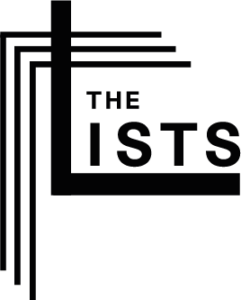A blueprint is a large-format reproduction, usually of an architectural or engineering plan. (Wikipedia) via freepik Favorite
Category: Technique
Moodboard
A mood board is a type of visual presentation or ‘collage’ consisting of images, text, and samples of objects in a composition. It can be based on a set topic or can be any material chosen at random. A mood board can be used to convey a general idea or feeling about a particular topic. They… Continue reading Moodboard
Generative Design
Generative design is an iterative design process that involves a program that will generate a certain number of outputs that meet certain constraints, and a designer that will fine tune the feasible region by selecting specific output or changing input values, ranges and distribution. The designer doesn’t need to be a human, it can be a test program in a testing environment or an artificial intelligence, for example a generative adversarial network. The designer learns to refine the program (usually… Continue reading Generative Design
Voice Cloning
Digital cloning is an emerging technology, that involves deep-learning algorithms, which allows one to manipulate currently existing audio, photos, and videos that are hyper-realistic.[1] One of the impacts of such technology is that hyper-realistic videos and photos makes it difficult for the human eye to distinguish what is real and what is fake.[2] Furthermore, with various companies making such technologies available to… Continue reading Voice Cloning
Autotune
Auto-Tune (or autotune) is an audio processor introduced in 1997 by and registered trademark of Antares Audio Technologies,[4] which uses a proprietary device to measure and alter pitch in vocal and instrumental music recording and performances.[5] It is not to be confused with a vocoder or the talk box.[6] Auto-Tune was originally intended to disguise or correct off-key inaccuracies, allowing vocal tracks to be perfectly tuned despite originally being slightly… Continue reading Autotune
simultaneous interpreting
Simultaneous interpretation (SI) is when an interpreter translates the message from the source language to the target language in real-time.[1] Unlike in consecutive interpreting, this way the natural flow of the speaker is not disturbed and allows for a fairly smooth output for the listeners. wikipedia Favorite
Soundscape Installation
A soundscape is the acoustic environment as perceived by humans, in context. The term was originally coined by Michael Southworth,[1] and popularised by R. Murray Schafer.[2] There is a varied history of the use of soundscape depending on discipline, ranging from urban design to wildlife ecology to computer science.[3] An important distinction is to separate soundscape from the broader acoustic environment. The acoustic environment is the combination of all the acoustic… Continue reading Soundscape Installation
Radio play
By : Link Radio drama (or audio drama, audio play, radio play,[1] radio theatre, or audio theatre) is a dramatized, purely acoustic performance. With no visual component, radio drama depends on dialogue, music and sound effects to help the listener imagine the characters and story: “It is auditory in the physical dimension but equally powerful… Continue reading Radio play
Rapid Prototyping
Rapid prototyping is a group of techniques used to quickly fabricate a scale model of a physical part or assembly using three-dimensional computer aided design (CAD) data.[1][2] Construction of the part or assembly is usually done using 3D printing or “additive layer manufacturing” technology.[3] wikipedia In manufacturing and design, a mockup, or mock-up, is a scale or full-size model of a design or device,… Continue reading Rapid Prototyping
Theatre
Theatre or theater[a] is a collaborative form of performing art that uses live performers, usually actors or actresses, to present the experience of a real or imagined event before a live audience in a specific place, often a stage. The performers may communicate this experience to the audience through combinations of gesture, speech, song, music, and dance. Elements of art, such as painted scenery… Continue reading Theatre
